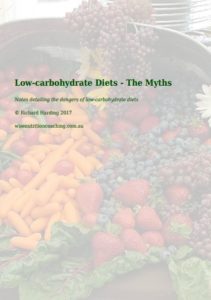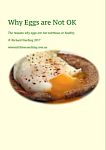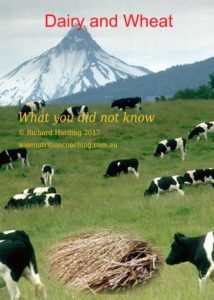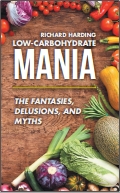Seventh-Day Adventists and Loma Linda
The first major study of Adventists began in 1960 and has become known as the Adventist Mortality Study. It consisted of 22,940 California Adventists with an intensive 5-year follow-up.
In 1979, Dr. Fraser received his doctorate from the University of Auckland. He is Professor of Cardiology at Loma Linda University School of Medicine and Professor of Epidemiology at the School of Public Health, Loma Linda, California.
Dr. Fraser is author of more than 100 scientific publications in peer-reviewed journals.
Gary E. Fraser is the director of the Adventist Health Study-2, at Loma Linda University. Terry Butler is the associate director of the Adventist Health Study-2.
Together they have produced dozens of papers verifying the validity of a vegan diet.
My website has many posts discussing the importance of the Seventh-day Adventists studies and their implications for our health.
Seventh-day Adventist’s and Health
A strong commitment to health has been a part of Seventh-day Adventist’s tradition since its founding in the 1840s.
There has been three large Adventist cohort studies in the United States and Canada since the 1950s. 1
Data from the AHS-2 study shows that Adventists smoke much less frequently than the general American population (males – 1.2%, females – 1.0%) and drink less alcohol (6.6% drink alcohol).
Diet is also significantly different from the general population with 4.2% are total vegetarian, 31.6% lacto-ovo-vegetarian, 11.4% include fish with their lacto-ovo-vegetarian diet, 6.1% are semi-vegetarian (eat meat <1 time/week) and 46.8% are non-vegetarian.
The rate of breast and prostate cancer is 4 times greater in the US population than is experienced by the Adventists. Similarly, the rate of cardiovascular disease is 5 times greater in the general population.
Founding of Seventh-day Adventists
Seventh-day Adventist was founded in 1849 by James Springer White and Ellen G. White.
Ellen White recruited John Harvey Kellogg. John Kellogg was a young, precocious medical doctor although he never practiced medicine. 2
John Kellogg was a surgeon, inventor of surgical instruments, exercise device inventor, pioneer in physiotherapy and nutrition and a prodigious writer. At age ten, he worked in his father’s broom factory in Battle Creek, Michigan. By the age of 16 he was a public school teacher. The next year he attended high school and graduated the same year. In 1873, James Springer White and Ellen White (co-founders of the Seventh-day Adventist church) encouraged John Kellogg to take a medical course and assisted with his tuition expenses.
In 1876, after finishing the two-year medical course at age 24, he was appointed superintendent of the Health Reform Institute in Battle Creek, Michigan. It had opened in 1866 in response from a request from Ellen White for Seventh-day Adventists to provide such an institution. Under Dr. Kellogg’s management it grew and prospered, achieving world-wide recognition as the Battle Creek Sanitarium with many famous visitors.
By the 1890s Dr. Kellogg came into conflict with church leaders over the control of the Seventh-day Adventist medical institutions. He finally did gain control of the Battle Creek Sanitarium. He taught conflicting views regarding the nature of God. In 1903 he published a book, The Living Temple, that contained the principles of pantheism. Pantheism is the belief that God and the universe are the same rather than separate entities. Ellen White wrote a number of letters regarding this contentious issue but Dr. Kellogg ignored them.
The church was formally established in Battle Creek, Michigan, on May 21, 1863, with a membership of 3,500. The denominational headquarters were later moved from Battle Creek to Takoma Park, Maryland, where they remained until 1989. The General Conference headquarters then moved to its current location in Silver Spring, Maryland.
The Sanitarium brand, created by the brothers John Harvey Kellogg and Will Keith Kellogg, initiated the meat alternative movement by creating the Protose brand at the Battle Creek Sanitarium. The product was later sold through mail order by Battle Creek Food Company. The Battle Creek Food Company mostly manufactured meat alternatives for the guests at Battle Creek Sanitarium.
Will Keith Kellogg and John Harvey Kellogg invented corn flakes at Battle Creek Sanitarium, by putting stale wheat berries between rollers and baking it. It was later served to the sanitarium guests. The Kellogg brothers also invented Bran flakes and Rice Krispies.
Later in 1906, Will Keith Kellogg founded the Battle Creek Toasted Corn Flake Company in Battle Creek, Michigan. Special Foods founded in Worthington, Ohio in 1939, manufactured nut meat substitutes. After World War II, it changed its name to Worthington Foods.
Worthington Foods introduced two canned meat alternatives in 1949: Soyloin Steaks and Meatless Wieners. In 1960, it bought the rights to manufacture and market Battle Creek Foods Company products after John Harvey Kellogg died. In 1975, it released its frozen soy-based meatless foods nationwide. In Australia and New Zealand, Sanitarium Health and Wellbeing Company, owned by the church, manufactures brands So Good, Up & Go and Weet-Bix.
Ellen White was a committed vegan.
Ellen White lived in Australia between 1891 and 1900. Whilst she was in Australia, Ellen White was instrumental in setting up a Bible school for missionary work (August 24, 1892), followed by the establishment of the educational institution known today as Avondale University College (1897). She inspired an interest in health care and healthful living. She created the Health Home in Sydney (1896)9, the Health Retreat in Cooranbong (1899), the Sanitarium Health Foods (1898), the Health Food Cafes in Sydney (1902) and Auckland NZ (1907) and the Sydney Adventist Hospital (1903). She believed that institutions had a part to play in the work of the Church.
Diet of Seventh-day Adventists
Unfortuately, the lacto-ovo vegetarianism is the diet of choice for most Seventh-day Adventists. It means you don’t eat the flesh of dead animals, but you’re comfortable with consuming products that are produced by living animals.
In Australia, 250,000 head of cattle are slaughtered every month.
3 million “unviable” day-old chicks hatched in the Australian chicken meat industry and 12 million male chicks hatched into the Australian egg industry every year are gassed or minced alive each year as they are “surplus” stock. 3
Health of Seventh-day Adventists
Much publicity is given to the longevity of the people of Japan and Okinawa (an archipelago that stretches from southern Japan to Taiwan). However, it is vegetarian Californian Seventh-day Adventists that have the longest lifespan and the highest levels of health on the planet.
The AHS-1 study showed that the average 30-year-old white vegan Californian Adventist male lives 9.5 years longer than the average 30-year-old white omnivore Californian Adventist male and with females living 6.1 years longer. 4
Below are some great Seventh-day Adventists diet books.
- Weeks, J. H. (2018) The Healthiest People on Earth: Your Guide to Living 10 Years Longer with Adventist Family Secrets and Plant-Based Recipes. BenBella Books.
- Pamplona, G. D. (1998) Enjoy It! Review And Herald Publishing Association.
- Signs Publishing (2011) Simple, Tasty, Good. Nathan Brown (ed.). Pacific Press.
Ellen G. White is John Howard Week’s great-great-grandmother,
Note that Californians are much healthier than the average American being in the top five states for longevity with an average life expectancy of 5-6 years greater than the Mississippi states.
Last updated on Friday 23 August 2024 at 15:16 by administrators
Footnotes
- Fraser, G. E., & Shavlik, D. J. (2001). Ten Years of Life—Is It a Matter of Choice? Archives of Internal Medicine, 161(13), 1645–1652.
- Ellen G. White Estate (1999) Sharing the Vision – John H. Kellogg . Available from: https://whiteestate.org/resources/pioneers/jkellogg/.
- Australian Eggs (2018) Australian Eggs – Annual Report 2017/18
- Fraser, G. E. & Shavlik, D. J. (2001) Ten Years of Life – Is It a Matter of Choice? Archives of Internal Medicine. 161 (13), 1645–1652.





